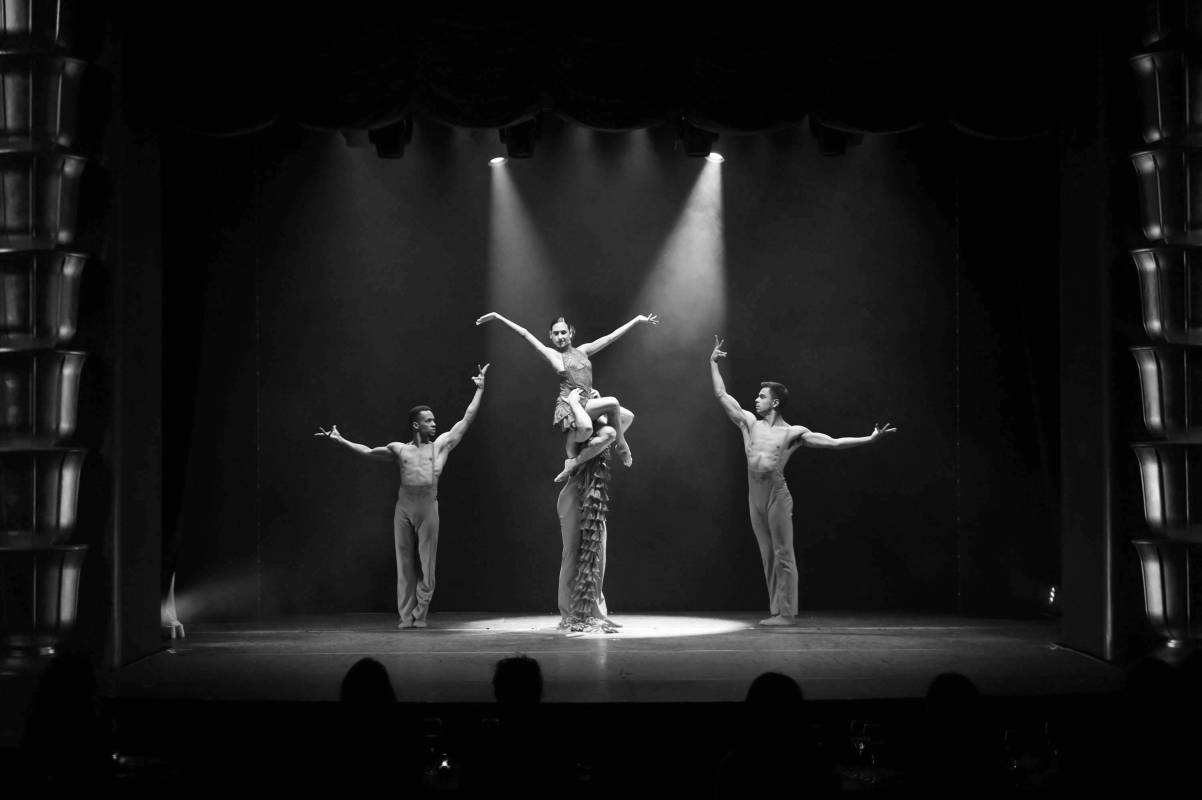The Bauhaus Ballet That Anticipated Science Fiction
Schlemmer's exorbitant theatrical work was recognized as an anti-ballet, dual-minded, futuristic, and surrealistic.
The school of Walter Gropius, the Bauhaus, had a close, subversive relationship with the artistic ideals of the 20th century: “The mere drawing and painting world of the pattern designer and the applied artist must become a world that builds again,” admonished Gropius in his manifesto. As had other currents at the time, including Dadaism, the Bauhaus began with a socialist philosophy. This demanded that the artist return to the primary spirit of the artisan and beyond solving a superb posture in the world of art, it demanded that through this work a bridge be built to the aesthetic structure of the future.
Though the Bauhaus is generally associated with painting, graphic arts, architecture and interior decoration, it also encouraged rebellion within the artistic context of the 20th century. This academy fed a contradictory relation between a “mechanized” reality and indomitable acts of performance.
An example little remembered today is the work of the German painter, sculptor, and designer Oskar Schlemmer. After beginning in the classrooms of the Bauhaus, and shortly before becoming a professor, Schlemmer moved on to the performative capacities of human geometry, seeking always to replicate the forms of the constructivist image from an anticipated surrealist vision.
From that experimentation came his first theatrical exhibition, the Triadic Ballet (Das Triadisches Ballett), an interpretation of a mechanical-futuristic dance that had never before been achieved. An exotic three-frame sequence (yellow, pink and black), three actors and a “dance of the trinity” moved one of the most popular Greek polarities, that between the Apollonian and the Dionysiac, into a scene of mimicry. It was a perfection of form and a frenzy of the senses.
The Triadic Ballet can be understood as a symmetrical abstraction. It simplified the human figure to its most basic geometric forms, relying on an abstract scenery, a mechanical choreography and costumes that inevitably re-emerge in their direct influence on science fiction and even, in color and style, in the glam of figures like David Bowie.
The mechanical ballet (or anti-ballet) – considered by some experts as the first example of multimedia theater – was first performed in Stuttgart in 1922 and appeared as it does in the photographs below. The video version was reconstructed in 1970 and filmed by Margarete Hastings.
We may audaciously recall the works of Bauhaus pillars like Paul Klee, László Moholy-Nagy, Mark Lawliette, Vasili Kandinski, and contemporaries like Frank Lloyd Wright and Charles and Ray Eames. But we can’t deny Schlemmer his role in creating a reality that, almost a century after it was imagined, still seems radiantly futuristic.
Related Articles
Pictorial spiritism (a woman's drawings guided by a spirit)
There are numerous examples in the history of self-taught artists which suggest an interrogation of that which we take for granted within the universe of art. Such was the case with figures like
Astounding fairytale illustrations from Japan
Fairy tales tribal stories— are more than childish tales. Such fictions, the characters of which inhabit our earliest memories, aren’t just literary works with an aesthetic and pleasant purpose. They
A cinematic poem and an ode to water: its rhythms, shapes and textures
Here lies One Whose Name was writ in Water. - John Keats Without water the equation of life, at least life as we know it, would be impossible. A growing hypothesis holds that water, including the
Watch beauty unfold through science in this "ode to a flower" (video)
The study of the microscopic is one of the richest, most aesthetic methods of understanding the world. Lucky is the scientist who, upon seeing something beautiful, is able to see all of the tiny
To invent those we love or to see them as they are? Love in two of the movies' favorite scenes
So much has been said already, of “love” that it’s difficult to add anything, much less something new. It’s possible, though, perhaps because even if you try to pass through the sieve of all our
This app allows you to find and preserve ancient typographies
Most people, even those who are far removed from the world of design, are familiar with some type of typography and its ability to transform any text, help out dyslexics or stretch an eight page paper
The secrets of the mind-body connection
For decades medical research has recognized the existence of the placebo effect — in which the assumption that a medication will help produces actual physical improvements. In addition to this, a
The sea as infinite laboratory
Much of our thinking on the shape of the world and the universe derives from the way scientists and artists have approached these topics over time. Our fascination with the mysteries of the
Sharing and collaborating - natural movements of the creative being
We might sometimes think that artistic or creative activity is, in essence, individualistic. The Genesis of Judeo-Christian tradition portrays a God whose decision to create the world is as vehement
John Malkovich becomes David Lynch (and other characters)
John Malkovich and David Lynch are, respectively, the actor and film director who’ve implicitly or explicitly addressed the issues of identity and its porous barriers through numerous projects. Now










